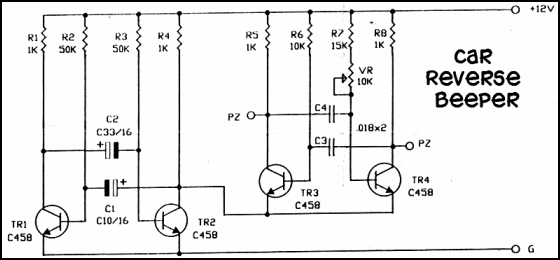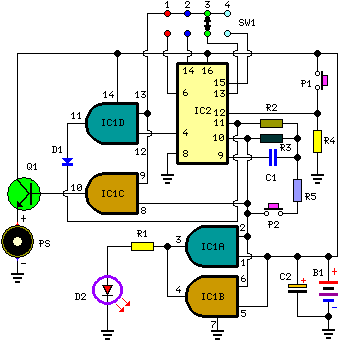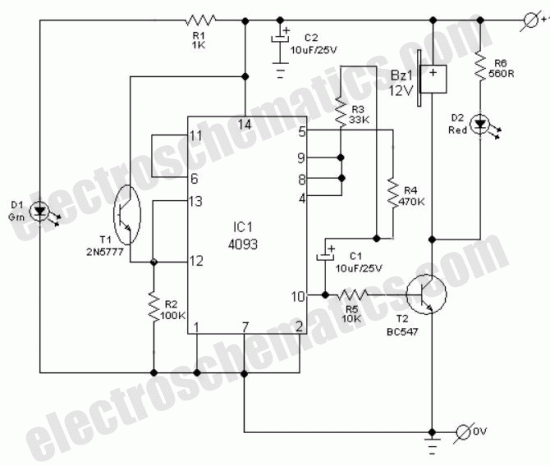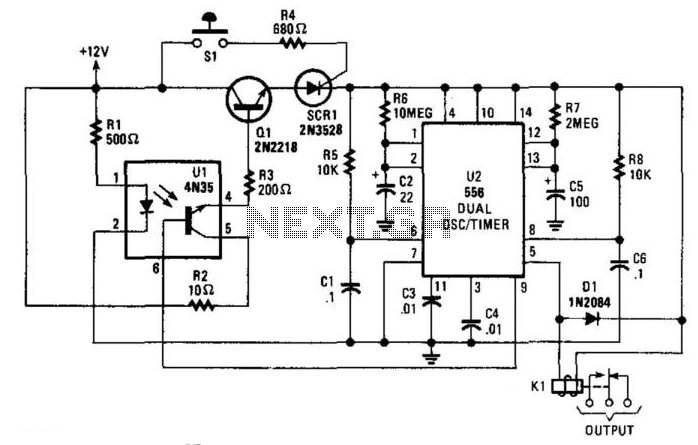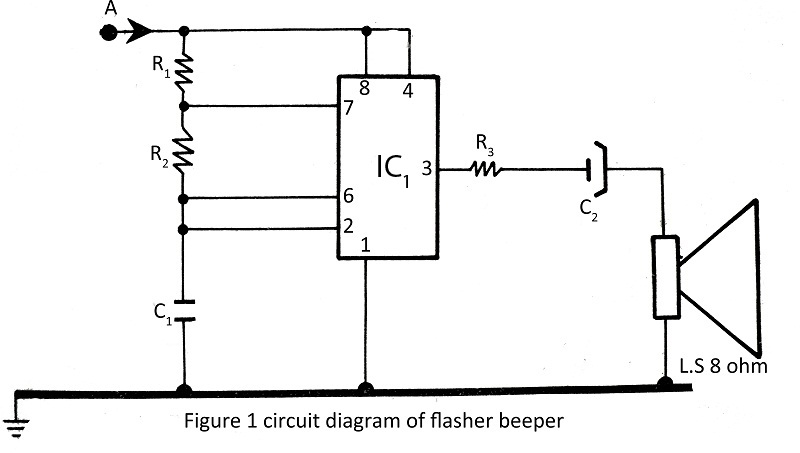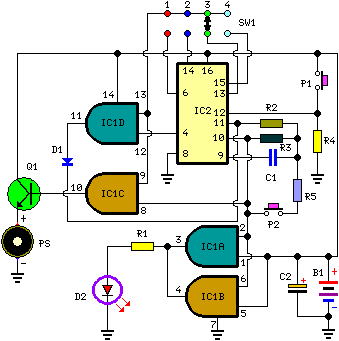
timed beeper
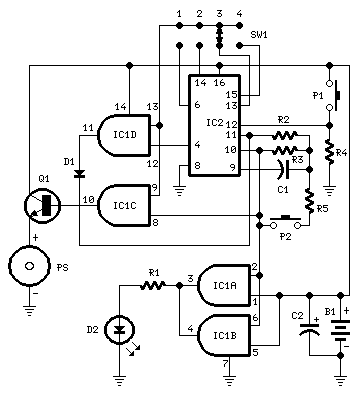
This circuit is designed for alerting purposes after a specified time has elapsed. It is suitable for tabletop games that require a fixed duration to answer a question or to move a piece. In this context, it serves as a modern substitute for the traditional hourglass. It is also useful for time management when children are brushing their teeth (for at least two minutes), in the kitchen, and in various other scenarios.
The alerting circuit can be implemented using a microcontroller or a timer IC, such as the 555 timer. The circuit typically includes a timing component, such as a resistor-capacitor (RC) network, to establish the desired time interval. The microcontroller or timer IC can be programmed or configured to count down from a set time, after which it activates an output device, such as a buzzer or LED, to provide an alert.
For a simple implementation, the circuit would consist of the following components:
1. **Power Supply**: A suitable power source, typically a battery or DC power supply, to provide the necessary voltage and current for the circuit operation.
2. **Timing Component**: A resistor (R) and capacitor (C) in series to form an RC timing circuit. The time period (T) can be calculated using the formula T = R × C, where T is in seconds, R is in ohms, and C is in farads.
3. **Timer IC or Microcontroller**: A 555 timer can be configured in monostable mode to generate a single pulse after the time period has elapsed. Alternatively, a microcontroller (e.g., Arduino) can be programmed to monitor the elapsed time and trigger an output.
4. **Output Device**: A buzzer or LED to provide an audible or visual alert when the timer reaches zero. The output can be connected to the timer IC or microcontroller output pin.
5. **User Interface**: Optional buttons or switches may be included to start, stop, or reset the timer. A display, such as an LCD or seven-segment display, can be added to show the countdown time.
The circuit can be housed in a compact enclosure for portability, making it suitable for various applications, such as games, cooking timers, or educational tools for children. Proper design considerations, such as debouncing of switches and power management, should be taken into account to ensure reliable operation.This circuit is intended for alerting purposes after a certain time is elapsed. It is suitable for table games requiring a fixed time to answer a question, or to move a piece etc. In this view it`s a modern substitute for the old sandglass. Useful also for time control when children are brushing teeth (at least two minutes!), or in the kitchen, and so on.. 🔗 External reference
The alerting circuit can be implemented using a microcontroller or a timer IC, such as the 555 timer. The circuit typically includes a timing component, such as a resistor-capacitor (RC) network, to establish the desired time interval. The microcontroller or timer IC can be programmed or configured to count down from a set time, after which it activates an output device, such as a buzzer or LED, to provide an alert.
For a simple implementation, the circuit would consist of the following components:
1. **Power Supply**: A suitable power source, typically a battery or DC power supply, to provide the necessary voltage and current for the circuit operation.
2. **Timing Component**: A resistor (R) and capacitor (C) in series to form an RC timing circuit. The time period (T) can be calculated using the formula T = R × C, where T is in seconds, R is in ohms, and C is in farads.
3. **Timer IC or Microcontroller**: A 555 timer can be configured in monostable mode to generate a single pulse after the time period has elapsed. Alternatively, a microcontroller (e.g., Arduino) can be programmed to monitor the elapsed time and trigger an output.
4. **Output Device**: A buzzer or LED to provide an audible or visual alert when the timer reaches zero. The output can be connected to the timer IC or microcontroller output pin.
5. **User Interface**: Optional buttons or switches may be included to start, stop, or reset the timer. A display, such as an LCD or seven-segment display, can be added to show the countdown time.
The circuit can be housed in a compact enclosure for portability, making it suitable for various applications, such as games, cooking timers, or educational tools for children. Proper design considerations, such as debouncing of switches and power management, should be taken into account to ensure reliable operation.This circuit is intended for alerting purposes after a certain time is elapsed. It is suitable for table games requiring a fixed time to answer a question, or to move a piece etc. In this view it`s a modern substitute for the old sandglass. Useful also for time control when children are brushing teeth (at least two minutes!), or in the kitchen, and so on.. 🔗 External reference
